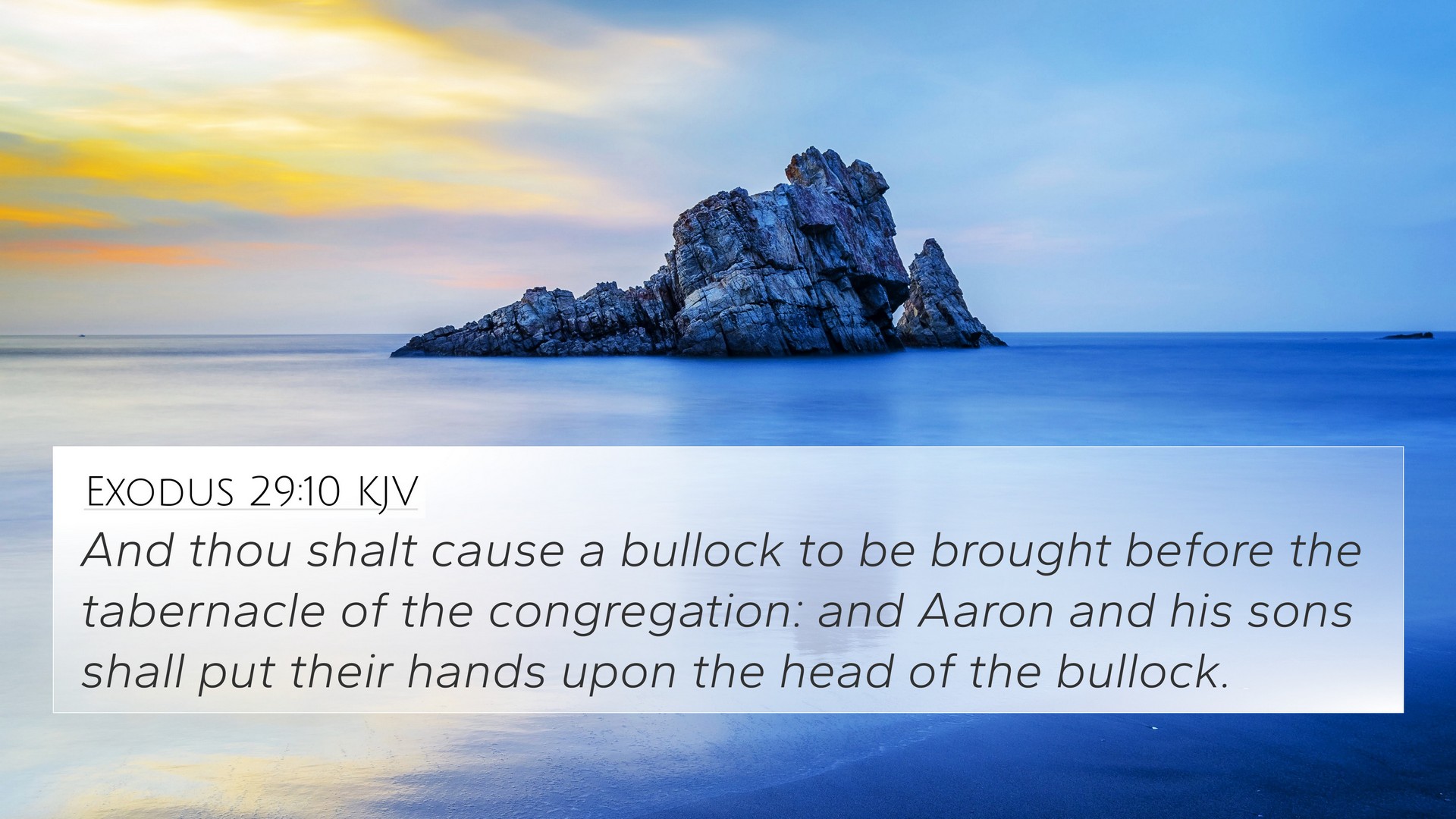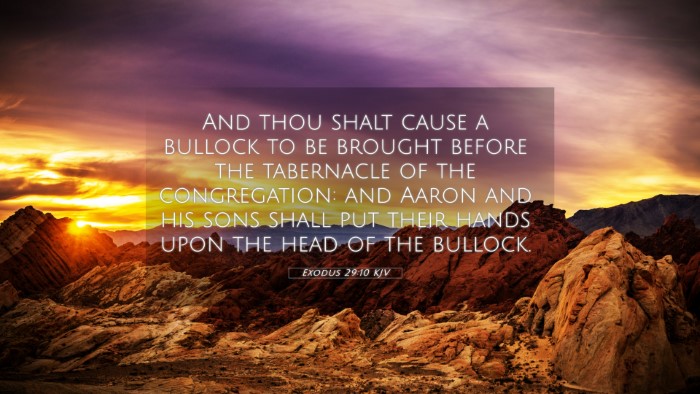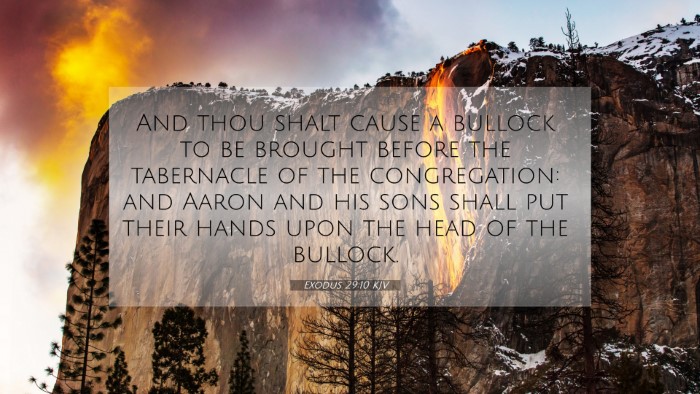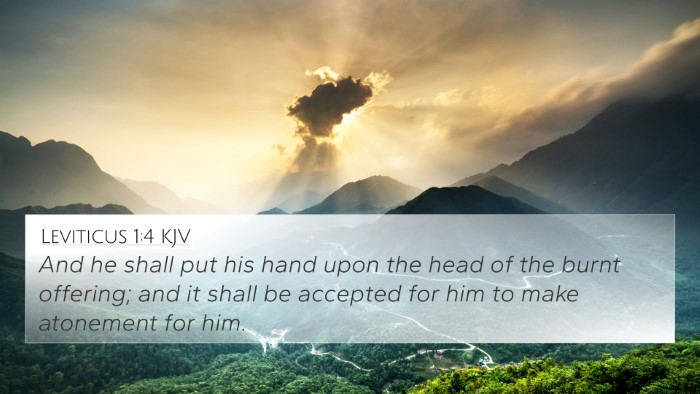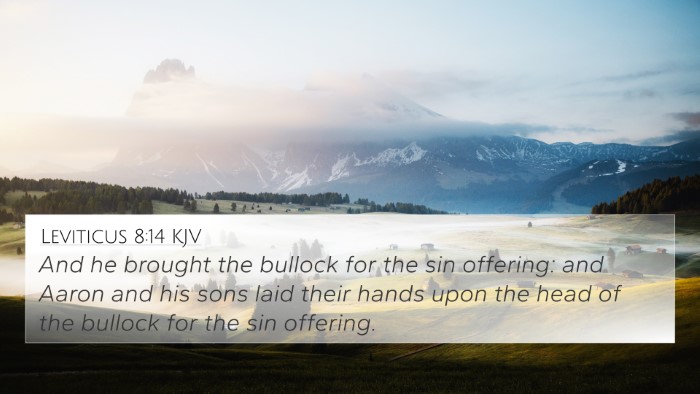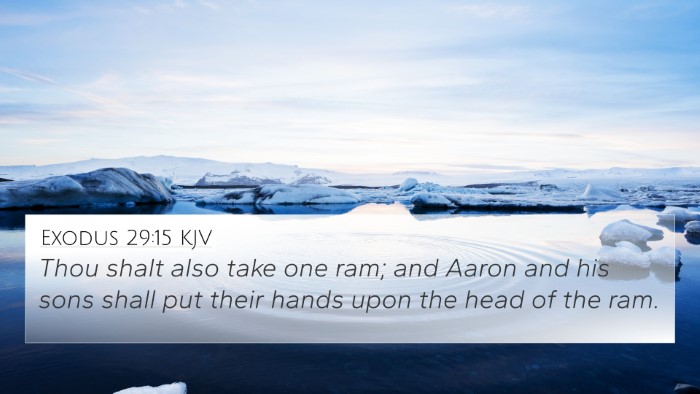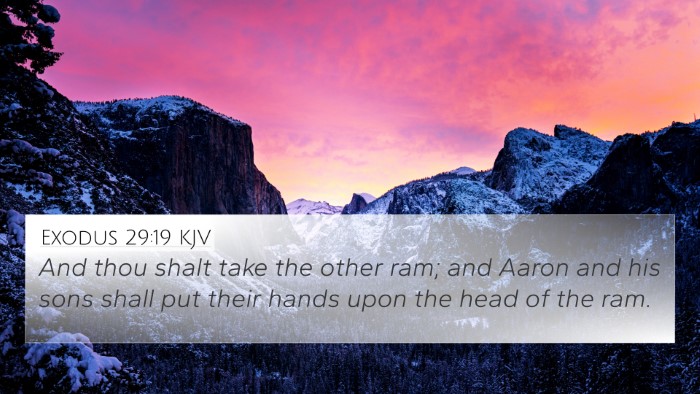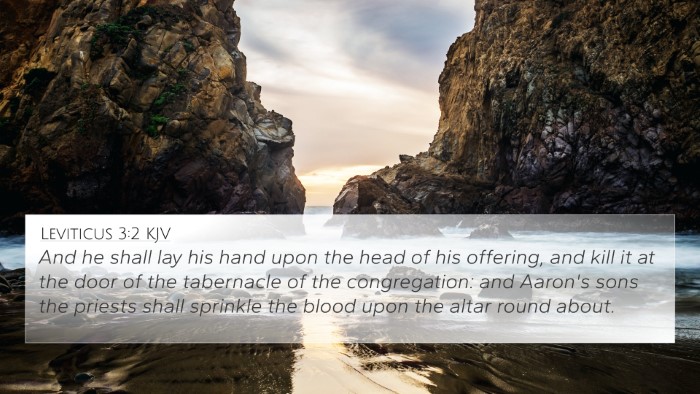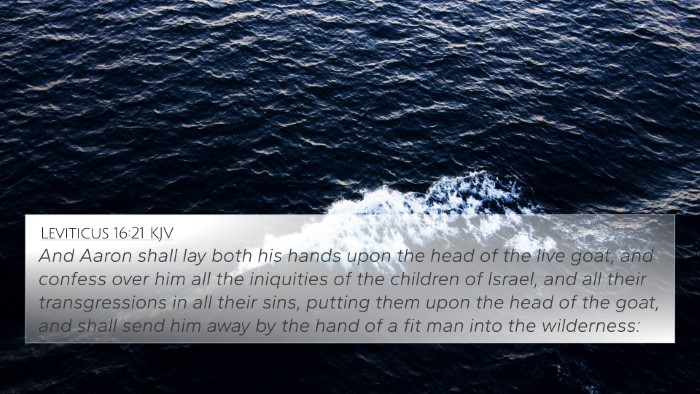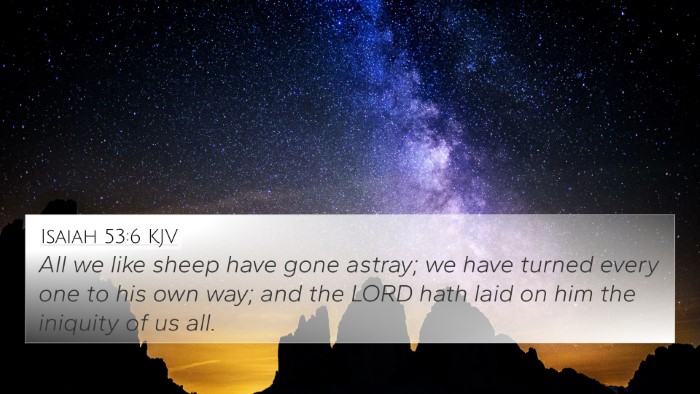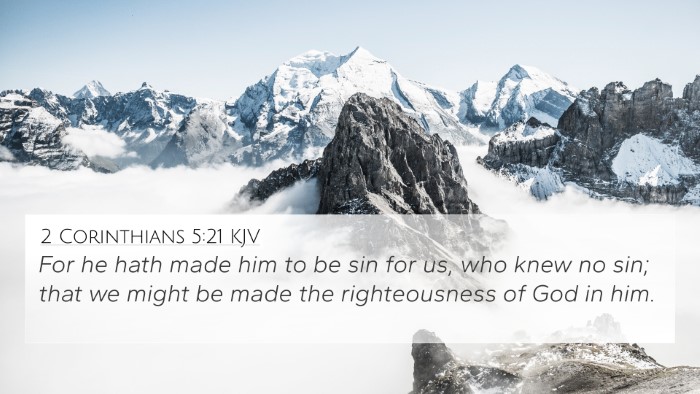Exodus 29:10 - Understanding the Meaning
Exodus 29:10: "Thou shalt cause a bullock to be brought before the tabernacle of the congregation: and Aaron and his sons shall put their hands upon the head of the bullock." This verse sets the stage for the consecration of Aaron and his sons as priests, marking the beginning of their sacred duties in serving God.
Summary of Insights
The act of placing hands on the head of the bullock symbolizes the transfer of sin and guilt from the priests to the sacrificial animal. This serves as an important representation of atonement and the seriousness of their role in mediating between God and the people.
Commentary Insights
- Matthew Henry: Henry emphasizes the idea of substitution in sacrifice, noting the importance of the bullock in foreshadowing Christ, the ultimate sacrifice for sin. He highlights that the act of Aaron and his sons laying hands on the bullock signifies identification with the offering.
- Albert Barnes: Barnes notes the need for the priests to acknowledge their own sinfulness and the necessity of atonement. He explains that the bullock serves as a vicarious sacrifice, taking on the sins of the priests that they might be cleansed to serve God effectively.
- Adam Clarke: Clarke elaborates on the ritualistic significance of this act. He points out that this method of consecration helps the priests realize their dependence on God's mercy and grace as they undertake their responsibilities in the tabernacle.
Bible Cross-References
Understanding Exodus 29:10 involves examining relevant cross-references throughout Scripture:
- Leviticus 4:3-4: Illustrates the process of sin offerings, emphasizing the laying of hands on the sacrifice.
- Isaiah 53:6: Foretells the concept of iniquity being placed upon Christ, paralleling the symbolism of the bullock.
- 1 Peter 2:9: Connects the idea of a chosen priesthood with the New Testament believers who are called to be a royal priesthood.
- Hebrews 10:4: Discusses the insufficiency of animal sacrifices, leading to the ultimate sacrifice of Jesus.
- John 1:29: John the Baptist refers to Jesus as the Lamb of God who takes away the sin of the world, highlighting substitutionary atonement.
- Romans 12:1: Paul urges believers to present themselves as living sacrifices, echoing the call to serve God with purity.
- Hebrews 5:1: Discusses the high priest's role in offering gifts and sacrifices for sin, maintaining the framework established in Exodus.
Thematic Connections
This verse reveals several thematic connections within the Bible:
- Substitutionary Atonement: The concept of a substitute suffering in place of sinners is a recurring theme, fulfilled ultimately in Christ.
- Priestly Mediation: Aaron and his sons serve as mediators between God and the people, a role that transitions to Jesus as the ultimate High Priest.
- Holiness and Consecration: The need for purification and setting apart for sacred service is consistent in both Old and New Testaments.
Interpretive Reflections
The act of laying hands on the bullock is richly symbolic, linking the practices of ancient Israel with the transformative message of the New Testament. Understanding these connections enhances the study of scripture, offering deeper insights into the redemptive narrative woven throughout the Bible.
Tools for Further Study
For those interested in further exploration, various tools for Bible cross-referencing can be invaluable:
- Bible Concordance: A comprehensive index of terms and verses that helps locate connections within scripture.
- Bible Cross-Reference Guide: Guides that provide side-by-side comparisons of related verses to enhance understanding.
- Cross-Referencing Bible Study: Methods for systematically exploring linked scripture passages.
Conclusion
Exodus 29:10 serves as a cornerstone for understanding the priestly system established in the Old Testament and its fulfillment in the New Testament through Jesus Christ. By engaging with these scriptural connections and leveraging cross-referencing tools, believers can deepen their comprehension of God's overarching plan for redemption.
